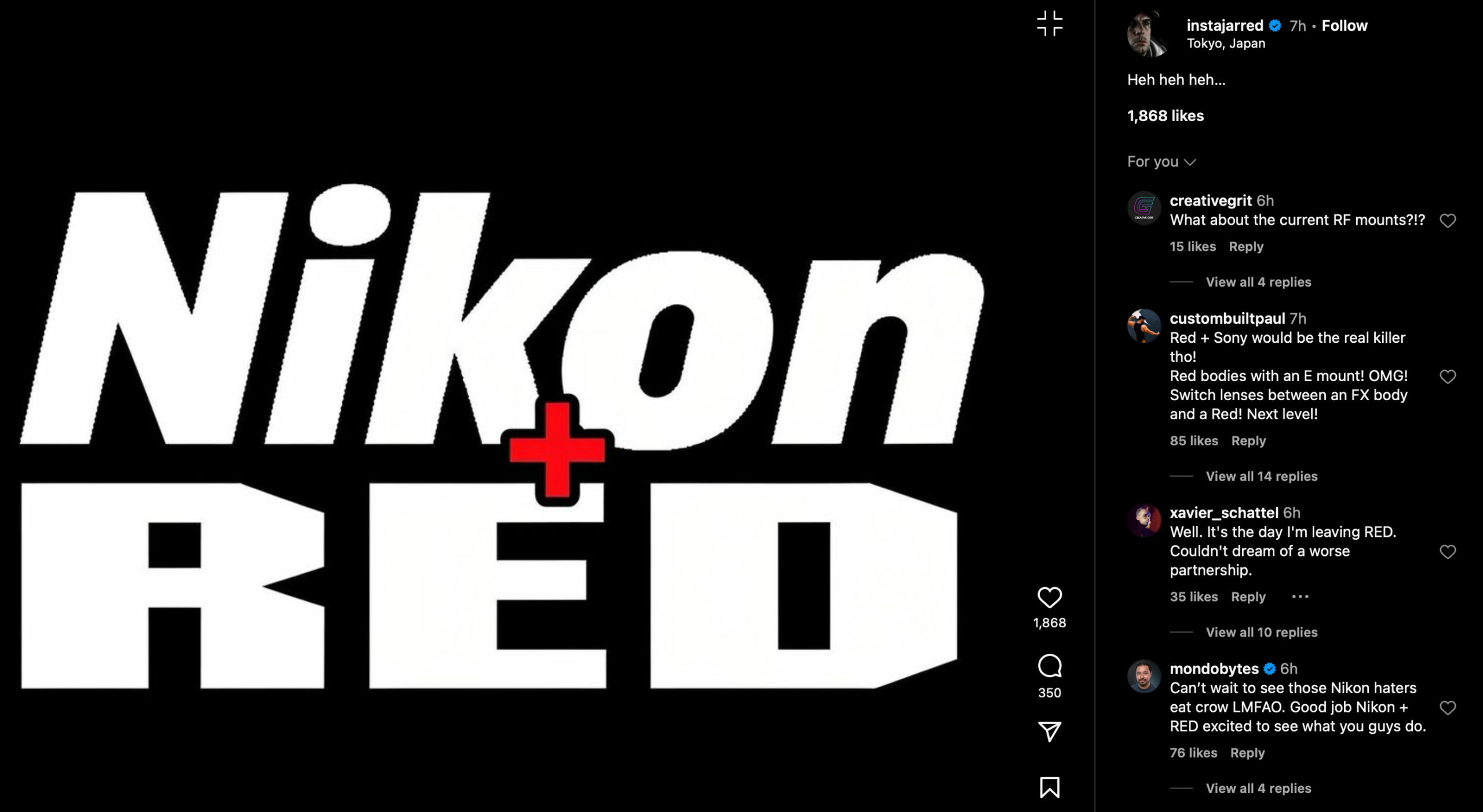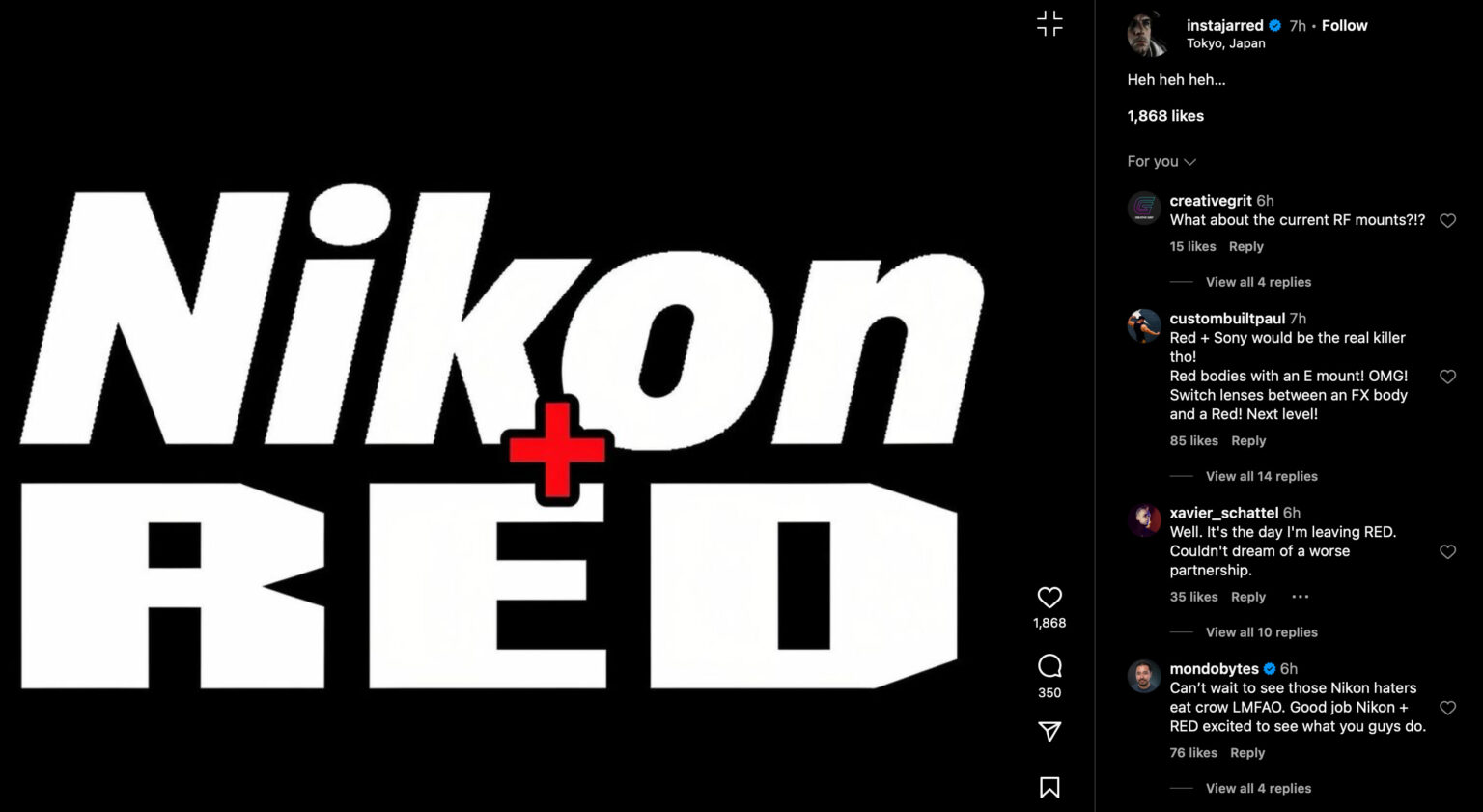

After so long as sworn rivals and an independent pirate spirit, RED have been sold to Nikon. I had to check the date when I saw the news.
The possibilities that can now spring forth from this deal are very interesting, and I’ll look at these here… I’ll also get into whether Nikon thinks the timing is right, on the verge of an AI revolution, to buy a traditional cinema camera company.
RED have previously had a close relationship with Canon and as the defender of a certain very successful RAW recording patent, it was a very rare sight to see RED enter a licensing agreement rather than litigation in court. But that is exactly what RED had with Canon, allowing Canon to offer a form of compressed RAW internal recording, while the Komodo got the Canon RF mount.
Now it seems to me, that is all up in the air (or should it be… completely in the trash?) with Canon’s biggest rival Nikon purchasing RED.
The billion dollar question is whether Nikon will close down Canon’s use of compressed RAW, or allow it to continue, or even license REDCODE to other Japanese camera companies. If they keep it exclusive, it spells trouble for Canon’s Cinema EOS ambitions. Either way, it’s hard to see Canon coming out of this well – they may well have to stump up hefty license fees to continue with Canon RAW internal recording, or license BRAW instead.
I think it’s safe to say this spells the end of Canon RF mount on RED’s cameras as well. I think any future Komodo will be Nikon Z mount. Nikon won’t want a rival lens mount on one of their subsidiary’s products.
There could also be RED branding on certain Nikon mirrorless cameras, and future Nikon cameras such as the Z9 Mark II could shoot REDCODE RAW, which is in my opinion the world’s best raw codec.
This would give Nikon a huge strategic advantage over Canon and Sony for high-end video.
Buying RED also gives Nikon a significant presence in the cinema market, one they’ve never had. This immediately allows them to go further into high-end filmmaking than Canon have managed in over a decade, with cameras such as the C700 that simply haven’t got anywhere near to challenging ARRI and Sony at the top-end of cinema production.
However, RED’s influence in this area seems to have been on the wane of late, with ARRI and Sony getting the lion’s share of that very high-end market in recent years. RED have also faced stiff competition from mirrorless cameras, Cinema EOS and Sony in rental, and in lower-end production.
Now, in some sense the very concept of a cinema camera is on the line with AI.
AI has the ability to take a large share of the video production market, and perhaps this is the biggest downside to what Nikon has done. Strategically it has a lot of upsides but the timing of it could be disastrous.
If there’s a large scale collapse in jobs and camera equipment due to AI filmmaking in the coming months and years, Nikon’s purchase will depreciate faster than an OG Nikon Z7.
I am excited to see how Nikon handles the RED brand, a company which at times has been controversial – especially in regards to this blog, and certain customers. Will RED’s existing independent ethos and staff be a good fit for a corporate entity from Japan? I have my doubts.
In my opinion this is the end of Jim Jannard’s RED as we knew it…
It could be that in the worst case for RED, Nikon just wants the patents and will end RED’s production of cinema cameras or significantly scale it down. We don’t yet know what their intentions are for the future though, and maybe Nikon themselves are yet to work it out.
RED’s extensive patents don’t just stop at compressed RAW video, they include things like the RED Motion Mount – an electronically variable ND filter with global shutter ability.
So in that sense, Nikon will get some nice features.
Meanwhile the purchase can only be a good thing for future high-end mirrorless cameras, especially REDCODE is finally licensed to the other Japanese manufacturers, I’m just less sure it will be good for RED’s high-end cinema camera ambitions going into 2025 and beyond.



